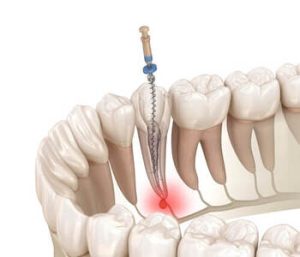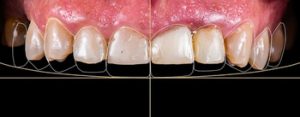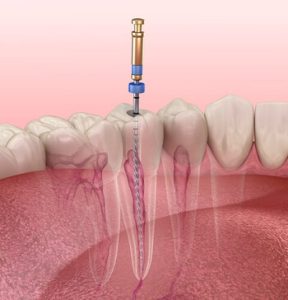The thought of a root canal may seem daunting, but it is a widely used and highly effective procedure for treating severely damaged or infected teeth. If you’re dealing with ongoing tooth pain, sensitivity, or swelling, a root canal may be necessary to prevent further complications. Gaining insight into the process—before, during, and after the procedure—can help alleviate any concerns and ensure you’re well-prepared for a smooth recovery. In this guide, we’ll walk you through the entire process—from getting a root canal before and after the procedure and recognising the symptoms to seeing the transformation of your treated tooth.
Facing a Root Canal? Here’s What You Should Know
If you’ve been told you need a root canal, you’re probably feeling a mix of anxiety and curiosity about the procedure. Root canal treatment is a highly effective treatment to save an infected tooth, relieve severe pain, and restore your oral health. But what exactly happens before, during, and after the root canal procedure? Let’s walk through the journey to recovery so you know what to expect.
 Understanding Why You May Need a Root Canal
Understanding Why You May Need a Root Canal
A root canal is required when the inner soft tissue of the tooth, or the pulp, becomes infected or inflamed, leading to pain and potential complications. This inner part of the tooth contains blood vessels, nerves, and connective tissues, which help keep the tooth healthy. However, when the pulp chamber is compromised, it can lead to intense pain, infection, and even tooth loss if not treated promptly.
Various factors can lead to the necessity of a root canal procedure, such as:
1. Deep Decay from Untreated Cavities
When a cavity is left untreated, bacteria penetrate deeper into the hard layer of the tooth, eventually reaching the pulp inside. Once the infected pulp becomes inflamed, it causes severe pain, making it challenging to eat, drink, or even talk comfortably. If not addressed early, the infection can spread to the root canal system, leading to abscess formation and bone loss in the jaw.
2. Tooth Damage Caused by Cracks or Fractures
A cracked or fractured tooth exposes the soft tissue inside, making it vulnerable to bacterial infection. Even a hairline crack that seems insignificant can allow bacteria to enter the root canal, leading to inflammation and infection. Cracks may occur due to chewing hard foods, teeth grinding (bruxism), or injuries.
3. Repeated Dental Procedures on the Same Tooth
Each time a tooth undergoes dental work, such as fillings, crowns, or restorations, it experiences some degree of stress. Repeated procedures can weaken the tooth structure and irritate the soft tissue inside, making the tooth more susceptible to infection and inflammation. Over time, this can lead to a diseased pulp, requiring a root canal treatment to save the tooth.
4. Trauma to the Tooth, Even If There Are No Visible Cracks
A blow to the mouth, whether from a sports injury, accident, or fall, can damage the blood vessels and nerves inside the tooth. Even if the outer white enamel remains intact, the inner pulp chamber may suffer damage that eventually leads to infection and severe pain. In some cases, a tooth may appear fine for weeks or months before symptoms develop.
What Happens If You Ignore These Dental Issues?
If an affected tooth is left untreated, the infection can spread beyond the root canal system, leading to:
- Severe pain and persistent tooth sensitivity
- Facial swelling is caused by the infection spreading beyond the affected tooth.
- Formation of an abscess, which can cause pus buildup in the gums
- Deterioration of the jawbone as a result of a long-standing infection.
- The need for tooth extraction, as the damage may become irreversible
Timely root canal treatment can preserve your natural tooth, halt the spread of infection, and restore your oral health. If you’re experiencing tooth pain, swelling, or sensitivity, consulting a dentist promptly can help prevent more severe complications.
Root Canal Before the Procedure: Signs to Watch For
If you’re experiencing any of the following, your dentist may recommend a root canal:
- Persistent tooth pain, especially when chewing
- Sensitivity to hot and cold that lingers even after the stimulus is removed
- Inflammation or swelling in the gums around the affected tooth.
- A pimple-like bump on the gums
- Discolouration of the tooth
These symptoms often indicate an infected tooth pulp, which requires immediate attention to prevent bone loss and further complications.
The Root Canal Procedure: Step-by-Step Breakdown
A root canal treatment aims to remove the infected pulp, thoroughly clean the root canal system, and restore the tooth’s functionality. While the idea of a root canal might seem daunting, modern techniques and local anaesthetic ensure that most patients experience minimal discomfort. Here’s a step-by-step breakdown of what to expect during the treatment.
Step 1: Diagnosis and Preparation
Before starting the procedure, your dentist will conduct a detailed examination to evaluate the extent of the infection. This generally involves:
- X-rays to examine the condition of the affected tooth and surrounding structures.
- A clinical examination to detect symptoms such as pain, swelling, or sensitivity.
- Applying local anaesthetic to numb the area and ensure you remain comfortable.
Once the anaesthetic takes effect, a dental dam is placed over the tooth to keep the area dry and free of bacteria during the procedure.
Step 2: Removing the Infected Pulp
With the affected tooth isolated, the dentist will:
- Make a small opening in the tooth to reach the pulp chamber and begin the treatment.
- Use specific instruments to remove the infected pulp, which contains nerves, blood vessels, and soft tissue inside the tooth.
- Thoroughly clean and disinfect the root canal system to remove any lingering bacteria and infected tissue.
By removing the diseased pulp, the dentist prevents further infection and relieves tooth pain.
Step 3: Shaping and Disinfecting the Canals
After extracting the infected pulp, the dentist will:
- Widen and shape the root canals to prepare them for filling.
- Rinse and disinfect the canals with antibacterial solutions to remove any lingering bacteria.
- Dry the canals thoroughly to prevent future infection or reinfection.
This step is crucial in ensuring that the root canal system is completely free of bacteria and debris.
Step 4: Filling the Root Canals
After thoroughly cleaning and shaping the canals, the dentist seals them with a biocompatible material known as gutta-percha. This material:
- Seals the canals to block bacteria from re-entering.
- Helps reinforce the tooth’s structure.
- Prevents potential tooth infections from spreading to other areas.
A temporary filling is then applied to seal the opening, safeguarding the treated tooth until a permanent restoration is placed.
Step 5: Rebuilding the Tooth with a Crown or Filling
A root canal-treated tooth is often weaker than a natural, untreated tooth, so it typically requires additional reinforcement. During a follow-up visit, your dentist will:
- Remove the temporary filling.
- Place a permanent restoration, such as a porcelain crown or composite filling, to protect the tooth from further damage.
- Ensure the treated tooth blends naturally with the other teeth for a seamless appearance.
For front teeth, a filling may be sufficient, while back teeth (such as an upper molar) usually require dental crowns for added strength.
Root Canal Aftercare: What to Expect and How to Heal
Root canal therapy fully removes the infected pulp and saves your natural tooth, but the healing process doesn’t end when you leave the dentist’s office. Proper aftercare ensures a smooth recovery, prevents further infection, and strengthens the treated tooth for long-term function. Here’s what you can expect after the procedure and how to take care of your tooth during recovery.
Immediate Recovery: The First Few Hours
After your root canal treatment, the local anaesthetic will take a few hours to wear off. During this time:
- Your mouth, gums, and treated tooth may feel numb.
- Refrain from consuming hot foods or beverages until the numbness wears off to avoid accidental burns.
- Be cautious while chewing to avoid biting your cheek or tongue.
Once the anaesthesia wears off, you might experience mild discomfort or sensitivity, which is completely normal. Most patients find that over-the-counter pain relievers help manage any post-procedure soreness.
Managing Pain and Sensitivity
While a root canal procedure eliminates the infected pulp and relieves severe pain, some discomfort is expected as the area heals. Here’s how to manage it effectively:
- Take pain relievers like ibuprofen or paracetamol as directed by your dentist.
- If you experience swelling, apply a cold compress to the outside of your cheek in 15-minute intervals.
- Steer clear of hard, crunchy, or sticky foods for the first few days to minimise irritation and protect the treated tooth.
- If pain worsens or swelling persists beyond a few days, contact your dentist immediately.
Most patients report that any discomfort subsides within a few days, and most root canals heal without complications.
Eating and Drinking After a Root Canal
Your treated tooth will be more fragile until a permanent filling or crown is placed. To prevent tooth damage, follow these dietary guidelines:
- Eat soft foods like yoghurt, mashed potatoes, scrambled eggs, and soups.
- Limit chewing on the treated tooth until your dentist confirms it is safe to do so.
- Stay away from hard foods like nuts, ice, and raw vegetables.
- Limit sugary foods and drinks to lower the risk of further tooth decay.
Once your dental crown or permanent filling is placed, you can gradually return to your normal diet.
Long-Term Healing and Oral Care
A successful root canal treatment allows you to keep your natural tooth for years to come, but it requires proper maintenance. Here’s how to keep your treated tooth healthy:
Practise Good Oral Hygiene Habits
- Brush your teeth twice daily using fluoride toothpaste to enhance strength and prevent decay.
- Floss daily to eliminate bacteria and food particles from between teeth.
- Rinse with an antibacterial mouthwash to kill bacteria and reduce the risk of future infections.
Attend Follow-Up Appointments
- Your dentist will check your treated tooth during follow-ups.
- A permanent filling or porcelain crown is usually placed on the next visit to protect the tooth from further damage.
- If your tooth had a temporary filling, it must be replaced with a permanent restoration to prevent further infection.
Watch for Warning Signs
Although most patients recover smoothly, monitor your treated tooth for any unusual symptoms, such as:
- Persistent pain or swelling that doesn’t improve
- A return of sensitivity to hot or cold foods
- Difficulty chewing on the treated tooth
- Gum swelling or pus, which could indicate an infection
If you notice any of these symptoms, contact your dentist immediately to prevent further complications.
The Role of a Dental Crown in Recovery
In many cases, a root canal-treated tooth will need a dental crown to provide long-term protection. A porcelain crown restores the tooth’s strength, appearance, and function, reducing the risk of fractures.
Your dentist may recommend a crown if:
- The treated tooth is a back tooth (such as an upper molar), which experiences heavy chewing forces.
- The tooth structure has been significantly weakened by deep decay or previous procedures.
- You want to restore the tooth’s natural appearance seamlessly.
With a properly placed crown, your treated tooth can last a lifetime with the right care.
The Benefits of a Root Canal: Why It’s Worth It
- Saves your natural tooth: Unlike an extraction, a root canal gives you the chance to keep your natural tooth, preventing the need for replacements.
- Prevents further infection: Removing the infected tooth pulp stops the spread of bacteria to other teeth, gums, and the jaw.
- Restores function and aesthetics: A porcelain crown or filling ensures your tooth looks and works just like it did before.
- Relieves pain: Most patients experience immediate relief from tooth pain after the procedure.
Root Canal vs. Extraction: Which is the Better Choice?
Many patients wonder if extracting the tooth is a better option than a root canal. While extraction might seem like a quicker fix, it can lead to:
- Bone loss in the jaw
- The potential necessity of a dental implant or bridge can be an expensive alternative.
- Affected alignment of other teeth due to shifting
A root canal procedure is often the best way to treat an infected tooth while preserving your natural smile.
Preventing the Need for a Root Canal
While most root canals are highly successful, prevention is always the best approach. Follow these tips to avoid severe decay and infections:
- Practise good oral hygiene: Brush twice daily, floss, and use an antibacterial mouthwash.
- Visit your dentist regularly: Routine check-ups can catch issues before they require a root canal.
- Address tooth pain early: Don’t ignore symptoms like persistent discomfort, swelling, or sensitivity.
 Final Thoughts: Is a Root Canal Right for You?
Final Thoughts: Is a Root Canal Right for You?
A root canal treatment can be life-changing, eliminating tooth pain, infection, and the risk of tooth loss. If you’ve been experiencing symptoms like sensitivity, severe pain, or facial swelling, consult your dentist as soon as possible.
By following the right aftercare and maintaining good oral hygiene, your treated tooth can last a lifetime. For expert care and personalised treatment, contact Infinity Dental Care today at (02) 9159 6237 to schedule an appointment.
Note: Any surgical or invasive procedure carries risks. Before proceeding, you should seek a second opinion from an appropriately qualified health practitioner.
References
- Medical News Today. (n.d.). Root canal: Everything you need to know. Retrieved from https://www.medicalnewstoday.com/articles/142780
- Healthline. (n.d.). Tooth extraction: Overview, procedure, and aftercare. Retrieved from https://www.healthline.com/health/tooth-extraction
- WebMD. (n.d.). Dental crowns: Uses, procedure, and care. Retrieved from https://www.webmd.com/oral-health/dental-crowns
- Cleveland Clinic. (n.d.). Dental X-rays. Retrieved from https://my.clevelandclinic.org/health/diagnostics/11199-dental-x-rays
- Colgate. (n.d.). What is a pulp chamber? Retrieved from https://www.colgate.com/en-us/oral-health/mouth-and-teeth-anatomy/what-is-a-pulp-chamber


 Understanding Why You May Need a Root Canal
Understanding Why You May Need a Root Canal
 Final Thoughts: Is a Root Canal Right for You?
Final Thoughts: Is a Root Canal Right for You?